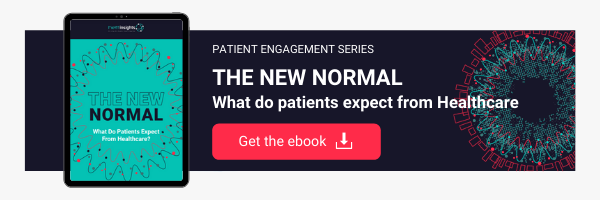The difficult circumstances of the coronavirus pandemic have given added impetus to the already much talked about issue of clinical communication systems. When you consider that Health Secretary Matt Hancock has stated pagers will soon be phased out of the NHS, it is obvious that replacements are needed for outdated legacy systems.
Clinical communication systems were a topic of discussion on a recent CPD webinar with leading industry experts. Here are some of the benefits they mentioned and other urgent comms considerations.
1. The Fast Flow of Information
No matter their role, clinical staff time is precious. The more effective the communication system in use, the faster vital information can move through a hospital. When information is moving quickly like this, it frees up staff to be more productive and see more patients because there are no delays.
It is much faster for a staff member to use their own device to get the information they need, rather than spending 30-45 minutes finding an available desktop computer. With pagers on the way out, the fast flow of information needs to be at the core of whatever comes next.
2. Improved Usability
A study found 92.6% of doctors find their smartphone useful in helping them perform their day-to-day clinical duties. Similarly, the Royal College of Nursing found nurses were using their personal mobile phones for work purposes.
The reason personal devices are so commonplace is because of their usability. Staff feel comfortable using their own phones because they have had plenty of practice. It is far easier and faster for them to use a smartphone than an alternative system that is less intuitive and more difficult to get to grips with.
There are, of course, complications with staff using their own devices and we will cover those a little later on.
3. Cross-Team Collaboration
It can be incredibly frustrating for staff when they are required to communicate with other teams and organisations. This is often because different processes or systems are in place which can cause unnecessary bottlenecks.
Any clinical communication system that is being considered should allow for easy access no matter the department or team. Consider the A&E department and maternity department, they will often need to collaborate but their teams work in very different circumstances. Systems and workflows need to be created with both in mind so staff can easily collaborate.
Creating the Right Clinical Communication System
In a webinar we recently hosted, the panel of experts discussed the impact the pandemic has had on communication within the NHS and what is needed in new systems that might replace pagers in the future.
The panel consisted of:
- Nicola Haywood Alexander - HETT Steering Committee
- Chris Parsons - Head of Solution Assurance, NHSmail and Office 365 at NHS Digital
- Pip Hodgson - Head of Digital Product at NHSx
- Rob Blagden - Dir. of Libraries, Technology and Innovation at the University of Gloucestershire
Pip Hodgson spoke of the need for a framework that will implement a much wider and more integrated way of working. The risk is that with too many devices of applications in use, things will be too confusing and actually harm productivity.
What many are looking for is clarity. There is a nervousness that innovation will take away vital technology from staff and that is not the case. In fact, the aim is the exact opposite. Communication systems should empower clinicians and enable them to work in the most efficient and flexible way.
This need for flexibility explains why so many are relying on personal devices. Rob Blagden suggested staff will choose flexible over inflexible every single time and it can even be the reason why someone might stay or leave a role.
Personal devices do present problems that need to be ironed out. One issue, for example, is infection control. As Pip Hodgson suggested, we cannot have devices coming in and out of hospitals (particularly at the moment) and being passed around between staff and patients. Staff are now being told to clean devices as thoroughly as they would their hands.
What is most important is systems are part of a robust communications strategy. This can only be achieved through widespread discussion. Systems creators need to engage with the staff who will actually be using the finished system. This feedback, from all levels of the organisation, will ensure it is fit for purpose and tailored to meet specific needs across the entire landscape.
We definitely recommend taking some time to download and watch this insightful webinar. It was packed with insightful discussions on clinical communication systems and everything that might mean for the future of healthcare.
This CPD-certified webinar is just one of the many we are part of as part of a leading healthcare innovation summit. To be one of the first to hear about future discussions like these, make sure to sign up below using the button under our social links!
%20(1).png?width=500&height=58&name=HETT%20insights%20logo%20RGB-04%20(1)%20(1).png)


.png)
